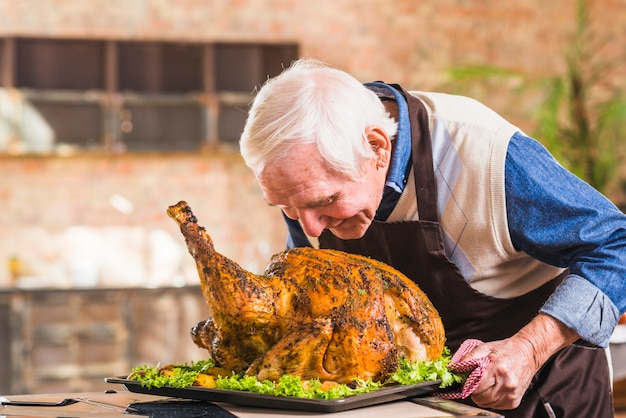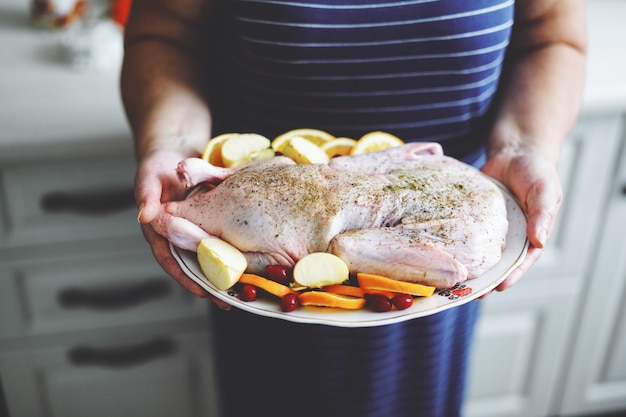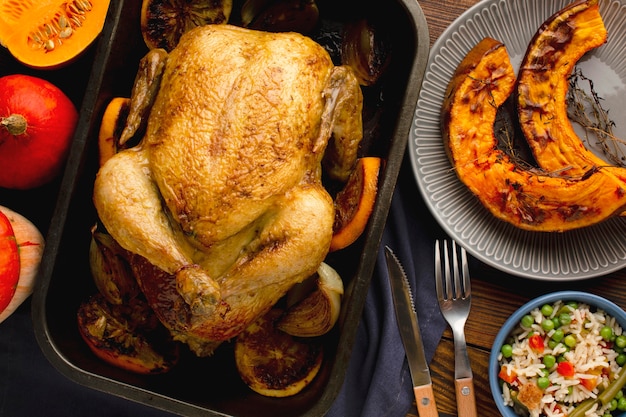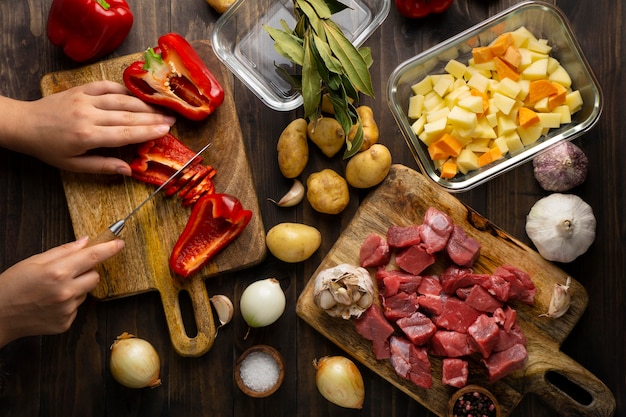Let's face it, there's something undeniably magical about the aroma of a roasted turkey filling your home, especially around the holidays. And, for those of us who aren't just ordering takeout, conquering the art of turkey cooking is a rite of passage. I'm talking about that perfectly golden-brown bird, juicy and tender, that leaves everyone craving seconds (and maybe thirds!). But, with a 15lb turkey, that can be a daunting task, especially if you're not sure how long to cook it.
Well, fret no more! I'm here to guide you through the process of cooking a 15lb turkey at 350 degrees, and by the end of this article, you'll be a turkey roasting pro, even if you're just starting out. We'll cover everything from calculating cooking times and understanding the factors that affect them to perfecting your roasting technique and ensuring a perfectly cooked, delicious turkey. I'll even throw in some of my own hard-earned tips and tricks, learned from years of holiday cooking (and a few kitchen mishaps!).
(Part 1) The Anatomy of a turkey cooking time

First things first: why is cooking time so crucial when it comes to a turkey? Well, undercooked turkey isn’t just dry and bland; it can be downright dangerous. On the other hand, overcooked turkey becomes tough and dry, and nobody wants to be chewing on a rubbery bird.
The Variables in the Equation
Let's be clear: there's no one-size-fits-all answer when it comes to turkey cooking time. It's more of an educated guess, a starting point, and that's where understanding the factors that influence it comes in.
- The Size Matters: A 15lb turkey is a good size for a decent-sized gathering, but the larger the bird, the longer it takes to cook. A 10lb turkey will require less time than a 20lb behemoth.
- Oven Temperature: The higher the temperature, the faster your turkey cooks. But, be careful not to crank the heat up too high – you risk burning the outside before the inside is cooked. 350 degrees is a good sweet spot, giving you even cooking.
- Stuffing: If you’re stuffing your turkey, it adds a whole new layer of complexity. Stuffing takes longer to cook, so you'll need to factor in extra time to ensure it's safe to eat. We'll dive into stuffing later.
- Your Oven's Personality: Even ovens of the same make and model can have slightly different temperature variations. It's always a good idea to check the temperature of your oven with an oven thermometer to make sure it's accurate.
(Part 2) Calculating Cooking Time for a 15lb Turkey at 350 Degrees

Okay, let's get down to the nitty-gritty. For a 15lb turkey at 350 degrees, you're looking at a cooking time of roughly 3 to 4 hours. But, remember, that’s just a general estimate.
Here's a handy table to give you a more precise idea, based on the turkey's weight:
| turkey weight (lbs) | Cooking Time (Hours) |
|---|---|
| 10-12 | 2.5-3.0 |
| 12-14 | 3.0-3.5 |
| 14-16 | 3.5-4.0 |
| 16-18 | 4.0-4.5 |
This table provides a starting point, but it’s crucial to remember that the only way to be certain your turkey is cooked thoroughly is to check its internal temperature. This is where a trusty meat thermometer comes in.
(Part 3) The Temperature Game: Checking for Doneness

Think of your meat thermometer as your turkey's personal bodyguard, ensuring it’s cooked to a safe temperature. Resist the urge to rely solely on your eyes; sometimes, a turkey can look perfectly browned on the outside, but still be undercooked inside.
Here's the golden rule for turkey cooking:
- Target Internal Temperature: 165 degrees Fahrenheit (74 degrees Celsius). This is the magic number that ensures your turkey is safe to eat.
Where to Check the Temperature
For the most accurate reading, insert the thermometer into the thickest part of the thigh, making sure you avoid touching any bones. It should go deep enough to reach the center of the muscle, giving you a true representation of the turkey's internal temperature.
(Part 4) Roasting Your Turkey: A Step-by-Step Guide
Now, let's put this knowledge into practice. Here's a step-by-step guide to roasting a 15lb turkey at 350 degrees:
1. Prepping Your Turkey: A Fresh Start
Pat your turkey dry with paper towels. This helps to ensure the skin crisps up nicely in the oven. Remove the giblets and neck from the cavity and rinse the turkey inside and out.
For a truly exceptional turkey, consider brining it. Brining is a technique where you soak the turkey in a salt-water solution for several hours. This adds moisture and flavor, resulting in a juicy, tender turkey. A good rule of thumb is to brine a turkey the day before you plan to roast it.
If you're not brining, you can still enhance the flavor by rubbing your turkey with a dry rub. A simple combination of salt, pepper, and paprika is a classic choice. Feel free to add herbs like rosemary, thyme, or sage for a more complex flavor profile.
2. Trussing Your Turkey: Keeping it Together
Trussing your turkey is a bit like giving it a culinary hug, tying the legs and wings together with kitchen twine. This helps the turkey cook evenly and maintain its shape. There are various techniques for trussing, so choose one that works best for you.
3. Oven Time: Ready to Roast
Place your trussed turkey in a roasting pan and put it in your preheated 350-degree oven. For even cooking, I recommend using a roasting rack. This elevates the turkey, allowing air to circulate around it. If you’re using a rack, add about 1 cup of water to the bottom of the pan. This helps to keep the turkey moist during cooking.
4. The Doneness Check: A Crucial Step
Don’t just rely on the estimated cooking time; check the turkey's internal temperature every hour. As you get closer to the end of the cooking time, check it every 15 minutes. Remember, it can take a while to reach that target temperature of 165 degrees.
Here's a tip: When you pierce the thickest part of the thigh with a fork, the juices that run out should be clear, not pink. This indicates that the turkey is fully cooked.
5. Resting Time: Let it Relax
Once your turkey hits 165 degrees, remove it from the oven and let it rest for at least 20 minutes. This allows the juices to redistribute throughout the turkey, making it even more tender and flavorful.
While your turkey is resting, you can start making gravy. Use the pan drippings for a truly delicious, turkey-flavored gravy.
(Part 5) The Stuffing Debate: To Stuff or Not to Stuff?
Stuffing is a beloved Thanksgiving tradition, but it does come with a safety concern. If you're stuffing your turkey, it's vital to cook it properly to prevent foodborne illness.
Here's the reality: stuffing a turkey is not considered the safest way to cook it. This is because the stuffing doesn't always reach a safe internal temperature in the center of the bird. The safest approach is to cook your stuffing separately.
If you do choose to stuff your turkey, add an extra 30 minutes to your cooking time to ensure the stuffing reaches 165 degrees. You can also check the stuffing’s doneness by pressing the center with a clean spoon. If it’s firm and not moist, it’s cooked through.
(Part 6) Flavoring Your Turkey: Beyond the Basics
Ready to elevate your turkey game? Here are some variations to try:
1. Butter-Herb Brine: A Symphony of Flavor
A butter-herb brine takes your turkey to another level of deliciousness. You can use a simple combination of salt, pepper, herbs (like thyme, rosemary, or sage), and butter. Make sure the butter is completely dissolved in the brine before adding the turkey.
2. Dry Rub: A Simple, Flavorful Option
For a quick and easy flavor boost, try a dry rub. A classic dry rub consists of salt, pepper, and garlic powder. Experiment with other herbs and spices to create your own signature blend.
3. Wine Reduction: A Touch of Elegance
A wine reduction adds a rich, savory depth to your turkey. Simply pour a cup of wine into the roasting pan and simmer it down to a glaze.
(Part 7) Turkey roasting tips for Beginners
Here are some tips to make your turkey roasting journey a smooth one:
- Don't Overstuff: Overstuffing can hinder the turkey from cooking evenly. Leave some room for the stuffing to expand during cooking.
- Keep a Close Watch: Monitor your turkey closely, especially as it nears the end of cooking time. Be prepared to adjust the cooking time based on the internal temperature.
- The Thermometer is Your Best Friend: Don't underestimate the power of your meat thermometer. It’s your go-to tool for ensuring a perfectly cooked turkey.
- Adjust as Needed: Every oven is different, so don't be afraid to adjust the cooking time if needed.
(Part 8) Leftover Turkey: A Culinary Canvas
You’ve cooked a magnificent turkey, and now you're left with a bounty of leftovers. Think of them as blank canvases for culinary creativity.
Here are some ideas for turning those leftovers into delicious meals:
- turkey sandwiches: A classic for a reason! Slice up some turkey, add your favorite toppings, and enjoy a satisfying sandwich.
- turkey salad: Combine diced turkey with mayonnaise, celery, onion, and your favorite herbs and spices. Perfect for wraps or sandwiches.
- turkey soup: Enhance your favorite soup recipe with a generous helping of leftover turkey.
- turkey pot pie: A comforting and hearty meal that’s perfect for cold weather. Add some leftover turkey to your pot pie filling.
- Turkey Enchiladas: For a Mexican twist, make turkey enchiladas. Your leftover turkey is the perfect filling.
(Part 9) turkey cooking faqs: Answers to Your Questions
Here are some common questions about cooking turkey:
1. Can I cook a turkey at a lower temperature?
Absolutely! You’ll just need to increase the cooking time. For example, cooking a turkey at 325 degrees Fahrenheit will take about 5-6 hours.
2. Can I cook a turkey in a slow cooker?
Yes, but it requires a large slow cooker for a 15lb turkey. It will take about 8-10 hours on low heat.
3. What happens if the turkey isn't cooked through?
If your turkey isn’t cooked through, it can be unsafe to eat. It’s crucial to ensure it reaches that safe internal temperature of 165 degrees. If you're unsure, you can always cook it for an additional 15 minutes.
4. What's the best way to store leftover turkey?
Store leftover turkey in the refrigerator for up to 4 days. You can also freeze it for up to 3 months.
5. How do I reheat leftover turkey?
You can reheat leftover turkey in the oven, microwave, or on the stovetop. Just make sure it’s heated through to 165 degrees Fahrenheit.
There you have it! I hope this guide has equipped you with the knowledge and confidence to roast a 15lb turkey at 350 degrees, achieving that delicious, perfectly cooked bird everyone will rave about. Don’t be afraid to experiment with different flavors and techniques. With a little practice, you'll become a turkey roasting maestro in no time. Happy cooking!
Everyone is watching

Perfect Rice Every Time: The Ultimate Guide to Cooking Rice
Cooking TipsAs a self-proclaimed foodie, I've always been a bit obsessed with rice. It's the foundation of countless cuisi...

Ultimate Guide to Cooking the Perfect Thanksgiving Turkey
Cooking TipsThanksgiving. Just the word conjures up images of overflowing tables laden with delicious food, the scent of r...

The Ultimate Guide to Cooking Asparagus: Tips, Techniques, and Recipes
Cooking TipsAsparagus. The mere mention of this spring delicacy conjures up images of vibrant green spears, crisp and burs...

Can You Cook Spaghetti with Gasoline? (The Shocking Truth)
Cooking TipsWe've all seen those crazy internet trends. You know, the ones that make you wonder, "Did someone actually try...

Chorizo and Eggs Recipe: The Ultimate Guide
Cooking TipsRight, let’s talk about chorizo and eggs. You know, that classic Spanish dish that's always a winner. It's th...
